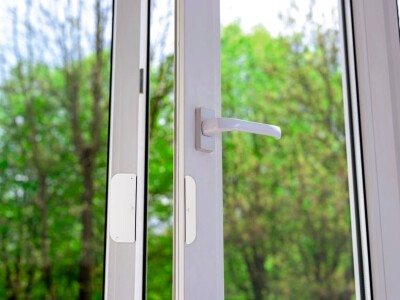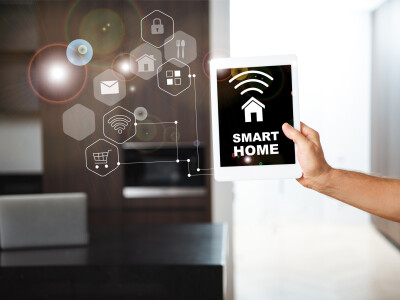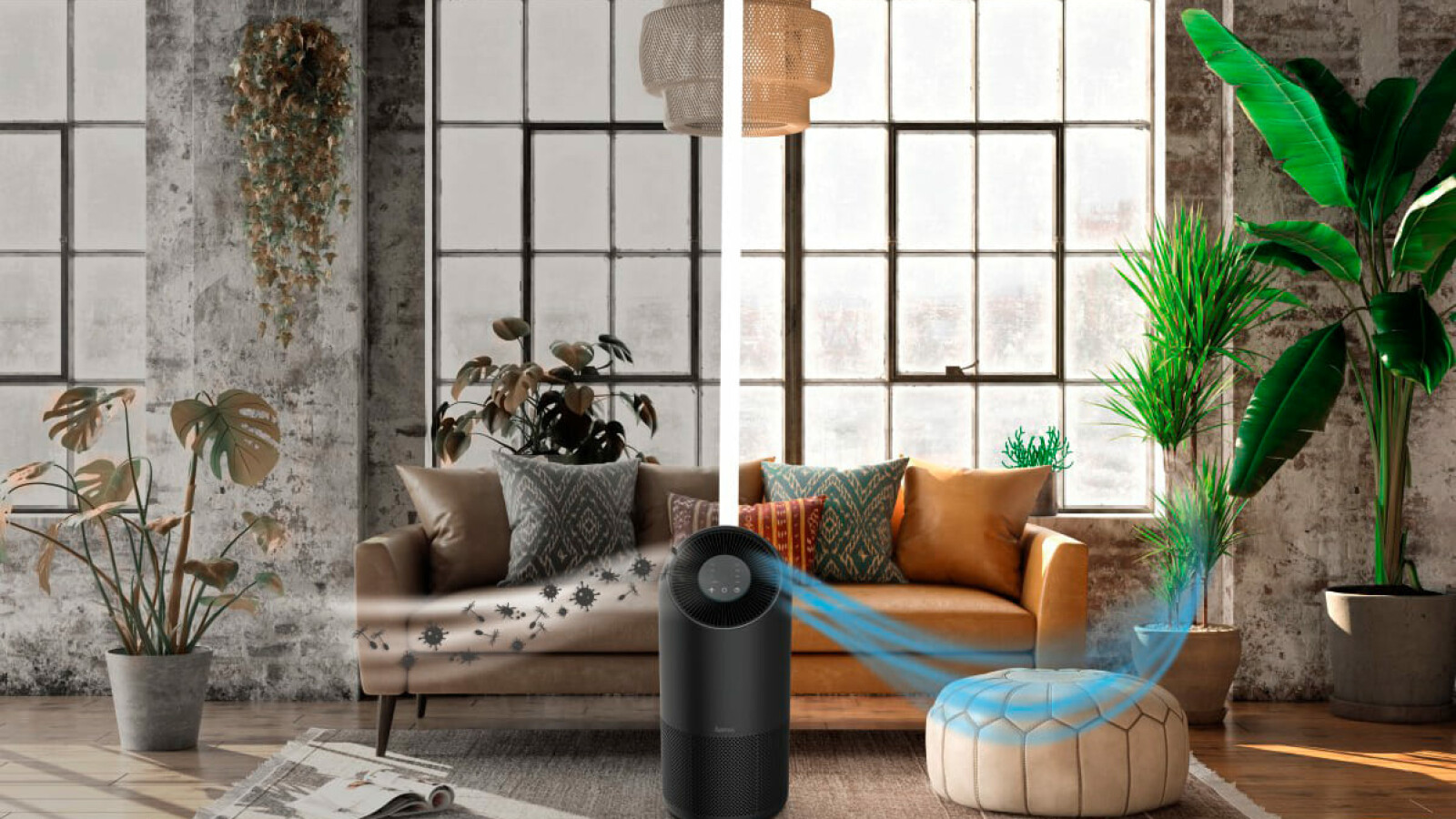With the products from the German manufacturer Hama you can make your home smart. Here you can get all the important information about the setup, functions and benefits.
Unlike other smart home providers, at Hama you can also integrate smart fans and air purifiers into your intelligent home. (Source: Hama)
Hama Smart Home: What is it and what does it offer?
Product range
- Which devices are compatible with Hama Smart Home?
Setting up a smart home: This is what you need to get started
Advantages and disadvantages
Smart home devices promise security, convenience and you can even use them to save energy and therefore money. The German company Hama, based in Bavaria, offers you the right products. Above all, the manufacturer wants to impress with simple setup. An argument that many smart home providers throw into the ring.
Hama itself can look back on a hundred years of company history, although smart home products have only been part of the range for a few years. These include smart lamps, smart radiator thermostats and surveillance cameras. But before we take a look at the entire range, we first want to explain what the Hama Smart Home actually is and what it can do.
Hama Smart Home: This is how the technology works
The Hama Smart Home, consisting of individual Hama devices, offers you the well-known advantages of a smart home. You can operate the technology in your home via smartphone or voice control, set up time controls for various devices and access many different functions that make life at home more pleasant.
If you already own devices such as an Amazon Echo Dot or a Google Nest Audio speaker, the smart home provider Hama is a particularly good choice for you. The manufacturer’s ecosystem connects easily to most Amazon and Google devices.
Hama products at a glance Smart window contacts help with economical heating and offer protection against burglars. (Source: Hama)
But let’s now take a closer look at what Hama has to offer. The provider divides this into four categories: light and lamps, smart and WiFi sockets, security and heating and air conditioning.
In addition to smart light bulbs, the light and lamps area also includes smart ceiling lights, smart wall lights and smart light switches. In the heating and air conditioning area you will find smart thermostats, fans, air purifiers and smart weather stations. The security solutions include motion detectors, smart door and window contacts, alarm sirens and of course security cameras.
Light and lamps as well as smart sockets are particularly suitable if you want to set up a comfortable smart home. Above all, surveillance cameras and the like bring security to your home and heating and air conditioning products increase the energy efficiency of your home.
Smart radiator thermostats tested in 2022: These devices help save heating costs
NETZWELT may receive a commission from the retailer for links on this page. More info.
Of course, the areas of application also overlap to a large extent. That’s why you can easily combine devices from the individual areas and make your smart home, for example, safe and comfortable at the same time.
Which devices are compatible with Hama Smart Home?
Hamas Smart Home devices use the WLAN radio standard. Along with Bluetooth, this is one of the most common wireless connection options. The devices are connected, for example, via your existing home network or a guest network specially set up for this purpose. Since WiFi is an open standard, you benefit in another way.
Devices from other manufacturers that also support the standard can be seamlessly integrated into your existing system. The WLAN standard is supported, for example, by devices from the Eve Smart Home system or Netatmo Smart Home devices.
The direct integration of Amazon and Google devices is also no problem for the provider Hama. This means you can control your smart home quickly and easily using the Amazon Alexa and Google Assistant voice assistants installed on these devices. Apple users don’t look too hard either. You benefit from a connection between Hama devices and Siri Shortcuts.
Setting up a smart home: This is what you need to get started
To build your own smart home, you can start with a single device at Hama. This could be a single smart lamp or a single thermostat. While other smart home systems require a hub or bridge, you don’t need such a central control with Hama.
Since Hama uses WiFi as the radio standard, a constant internet connection is necessary so that you can use your smart home. Accordingly, a flawless network is also an important prerequisite. You cannot use Hama’s smart devices offline.
If you want to control your smart home while on the go, you will also need a smartphone on which you can install the Hama Smart Home app. It serves as a remote control for your devices and is absolutely necessary for some functions. If you integrate other systems from third-party providers into your smart home, you may also need to use a higher-level smart home app such as IFTTT. It allows you to control multiple systems at the same time.
Advantages, disadvantages and what you should consider when buying
Setting up your devices is incredibly easy at Hama, for which you don’t need a hub or bridge or complex cabling. Control via the Hama Smart Home app is also very user-friendly and introduces you to the various options quickly and easily.
Since Hama is a German provider, you also enjoy strict data protection in accordance with EU standards. The high compatibility and the open WLAN radio standard are also further advantages.
WiFi network should always be secured The WLAN standard scores with high compatibility, but such wireless networks are also easily vulnerable. (Source: VitalikRadko/depositphotos.com)
However, using WiFi also poses risks. Especially if you use your home network for the Hama Smart Home, you expose yourself to potential cyberattacks. If your WLAN is not sufficiently secured, in the worst case scenario, hackers can take control of your smart devices.
To prevent this from happening, you should always use strong passwords and a firewall for your network. Operating your smart home via a guest network provides further security, as your home network remains unaffected by attacks on your smart home. If you want to be on the safe side, you can inquire about additional insurance for your own smart home devices.
The range of products at Hama is one of the larger, although some suppliers such as Bosch offer a significantly larger selection, which also includes smart solutions for the garden.
Smart Home: Providers in Germany at a glance
Smart home providers at a glance
If you want to buy a smart home, you are spoiled for choice. Which system and which provider do you want to use? The market leaders and alternatives.
Basically, the Smart Home from Hama is a good choice if the internet connection you always have to have doesn’t bother you. Setup and operation are easy, all important smart home products are included in the provider’s range. In addition, there is a high level of compatibility, which makes it easy for you to expand your home ecosystem with additional products – including from other providers.
